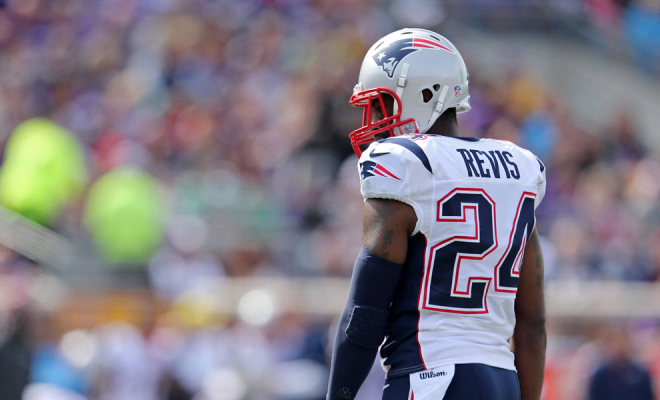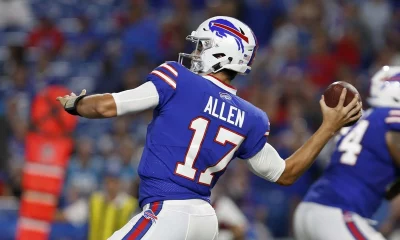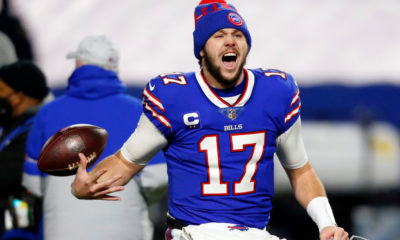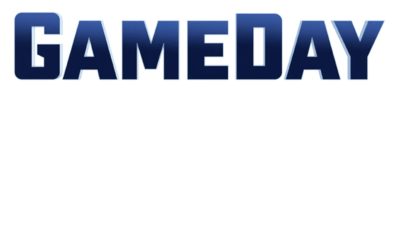
Woah! Where did free agency go? Aren’t we supposed to have a week of big name signings, ten days of veterans settling for less money than they thought they’d get then a bunch of curtain jerkers and mid card jobbers filling out roster space between mid March and August? This year we went through all three phases in about an hour and a half!
With this in mind, I thought it informative to look back on the ten most important transactions from the free agency period. Not important from a team perspective e.g. scheme, but instead what these moves represent for the wider NFL picture, going in to the 2015 season and beyond.
Ndamakong Suh to the Miami Dolphins
Conventional wisdom tells us that dominant players at their respective positions don’t hit free agency. They sign multi-year mega deals with the team that drafted them, enjoy their prime years there then hopefully do enough to secure a third contract that will see them through to retirement. With the changes to the rookie pay scale made in 2011, the days of the vastly overpaid rookie have ended. We shall not see a repeat of the Suh situation in Detroit, where an unproven commodity hamstrings a teams ability to manage the salary cap for years to come, making it unviable to even franchise tag him. Suh is the last of an extinct breed. From a football perspective, he should immediately upgrade a defense that began inviting teams to run all over them from week 11 onwards in 2014, but if Miami think a dominant run stuffing, pass rushing defensive tackle is the one piece they needed to transform them from vanilla plodders to Super Bowl contenders, they are sadly mistaken.
Jimmy Graham to the Seattle Seahawks
Pete “Pete Fast and Loose” Carroll. He wants to win, he knows how to win, and he’s not afraid to gamble if that gamble helps him to win. Under Carrolls tenure, and in concert with GM John Schneider, the Seahawks have shown that they are prepared to trade potential value for proven commodities. This was never more evident than when they sent a first round pick to Minnesota for Percy Harvin. Yes, Harvin spent his first season injured, but Carroll thought him a talented enough wildcard to have up his sleeve should he need him to break open a game, as Denver discovered 12 seconds into the second half of Super Bowl 48. Signing Graham gives the Seahawks a proven performer, a Redzone target of the highest calibre, and a further nudge along the path towards making Russell Wilson the driver of their offense, not Marshawn Lynch.
Andre Johnson, Frank Gore to the Indianapolis Colts
In his first three years in the NFL, Andrew Luck has played at a high level with a surrounding cast including the fading Reggie Wayne, the misfiring flop of Trent Richardson and characters with barely believable names such as Griff Whalen or Zurlon Tipton. With the capture of Johnson and Gore, Ryan Grigson is throwing much-needed caution to his customary wind and securing viable (if slightly ageing) talent for his stud QB to utilise. With speculation coming from Indy that Chuck Pagano will not be extended before the season, these moves all indicate to this observer that the Colts have entered the “Win NOW” zone. While they no doubt hope Donte Moncrief and Boom Herron continue to develop, they will do so behind two of the finest Miami Hurricanes to have graced the league for the last decade (U Know It) as Paganos offenses tries to show it can live with Tom Brady in a shootout…even if the jury remains out on the defense.
Byron Maxwell to the Philadelphia Eagles
Much has been written and spoken about both this player and his new home this offseason. Both have some perceived wisdom to combat in the 2015 season. Maxwell has already been tagged by some as the second coming of Nmanmdi Asomugha in Philadelphia, a call back to a previous highly prized free agent captured by the Eagles during an aggressive spending period. Maxwell must first shake off this tag, a relatively easy task if a) he plays like he gives a crap and b) given the Eagles willingness to play a system designed to showcase his strengths, and the notion that players who leave the Seahawks are mere system products, and should be avoided with the same level of dread one associates with free agents from Pittsburgh or New England.
Greg Hardy to the Dallas Cowboys
Greg Hardy has spent much of the last year being discussed as a sidenote, a topic of NFL discussion bearing little to no significance to deeds being performed between the White lines in helmets and pads. He is, I have little doubt, far from being a Boy Scout, and did engage in activities that put his appeal to a team beyond the pale for some. The whole of the previous text could also said to be true of Ray Rice, who is likely never to play another NFL down whereas Hardy could potentially make $13m in 2015 if all goes his way. The biggest reason as to why can be traced back to the 2013 season. At that time, Ray Rice was coming off a 660 yard rushing season, at an abysmal 3.1 yards per carry, and was 57th out of 57 ranked running backs by Pro Football Focus. Hardy, on the other hand, had tied a franchise record for the Panthers with 15 sacks and sat second amongst 4-3 defensive ends on PFF. He remained a force, Rice was fading. There will always be room in the NFL for people of dubious character, it would seem…as long as they put up the numbers.
Darrelle Revis to the New York Jets
The return of #24 to the Jets serves as a powerful reminder to those who wish to confuse sporting accomplishment with professional advancement. I’m not saying Darrelle Revis is ALL about the money, far from it. But many people are no doubt still stunned that, after winning a Super Bowl with New England last year, he elected to chase big bucks back at his old stomping ground rather than remain with the Patriots. Why not stay with Tom and Bill and chase a second ring, to cement a legacy as one of the best defensive players of his generation? Because legacy looks great in a book, and sounds great when it’s brought up in some documentary. But money talks. Teams want to win Super Bowls, players want to win contracts. There are very few exceptions.
Nick Fairley to the St Louis Rams
This move is notable purely for how bizarre it seemed to me at the time, and still continues to be so. I’m all for the notion that you should always reinforce from a position of strength, not weakness, but if ever a player signing seemed to sum up the mediocre nature of a coach and front office, it is the Rams making yet another defensive tackle their marquee signing in free agency. This team, under Jeff Fisher, has managed to avoid signing a big name quarterback for the last two seasons, relying on second-rate backup talent at sports most demanding position to steer them to promising yet ultimately fruitless campaigns. This signing indicates that they think they can beat teams on defense, and hope something happens by accident on offense. The days of the Greatest Show on Turf are quickly fading from memory.
DeMarco Murray to the Philadelphia Eagles
The running back position has been, and seemingly will be, devalued in the NFL. The men who perform this task should be drafted, run into the ground, then discarded like a damp rag, never to see big money deals that were for a time part of the uniform of the stud NFL tailback. Chip Kelly begs to differ. Believing Murray to be the perfect back for his system, Chip the GM has splashed out a huge amount of coin on him, no doubt hoping his injury record can improve using relief efforts from Ryan Mathews and Kelly’s much vaunted sports science. If this move pans out, we could see a return to glory for the running back and their bank balances. If it doesn’t…we could see Chip return to college football.
Charles Clay to the Buffalo Bills
The days of the poison pill offer sheet are, like the overpaid rookie, long gone. But, in overpaying Clay, it is somewhat gratifying to see one aspect of the game remains fit and healthy, at least in upstate New York. That aspect being to do whatever you can to weaken your opponents. Some may argue that, by signing Jordan Cameron, Miami have upgraded at tight end and the Bills have shot themselves in the foot. But the fact of the matter is Cameron is a huge injury risk, many months removed from a spell of production that gave him his current reputation, whereas Clay is heading (within the division, no less) to an offense whose coordinator has a record for getting production out of his tight ends. The Buffalo Bills used their financial model to rob a division rival of a key component, scoring the first victory of the season in doing so. The spirit of competition lives on.




















Facebook
Twitter
RSS